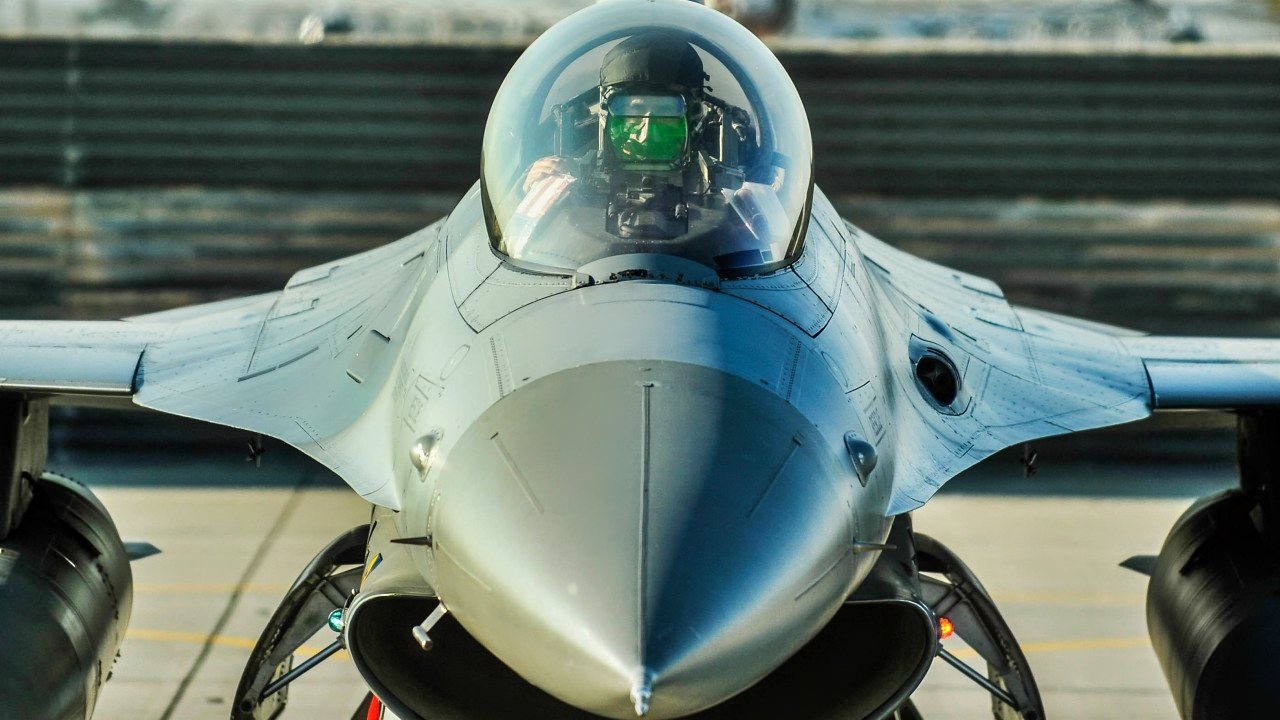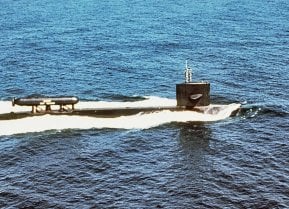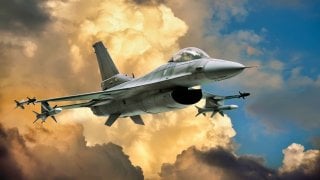Is the Age of the F-16 Fighter Headed for a 'Crash Landing'?
As fifth-generation jets like the F-35 and Su-57 grab headlines, the F-16 Fighting Falcon remains one of the world’s most effective combat aircraft. Celebrating 50 years of service, the F-16 continues to prove its value, recently scoring air-to-air kills in Ukraine’s battle against Russia.
What You Need to Know: As fifth-generation jets like the F-35 and Su-57 grab headlines, the F-16 Fighting Falcon remains one of the world’s most effective combat aircraft. Celebrating 50 years of service, the F-16 continues to prove its value, recently scoring air-to-air kills in Ukraine’s battle against Russia.

-Similarly, Iraq’s F-16 fleet plays a pivotal role in anti-terror operations against ISIS. With unmatched versatility, global reach, and combat success, the F-16 remains a crucial element in modern warfare — far from retirement, this jet continues to evolve and thrive on the battlefield.
Is the Era of the F-16 Over?
The American-made General Dynamics and Lockheed Martin's F-16 Fighting Falcon, or as her crews prefer to affectionately call her: The Viper, is one of the most storied and battle-proven fighter planes ever made, Yet due to the ever-increasing predominance of Fifth Generation stealth fighters, such as F-22 Raptor and F-35 Lightning II, both Lockheed Martin products themselves, ironically enough, as well as China’s Chengdu J-20 “Fagin” and Russia’s Sukhoi Su-57 “Felon”), along with all the rumblings of Sisth Generation fighters just over the proverbial horizon, this understandably generates the question of whether the F-16 is obsolescent and past her prime.
After all, the venerable Viper is fifty years old now.
However, seeing how is the world's most common fixed-wing aircraft in military service, with twenty-six users, at last count, around the world, it’s safe to answer that question with a resounding, “hell no!”
Or, to paraphrase Mark Twain, “The report of the Viper’s death was an exaggeration.” We shall cite two prime examples of why the Fighting Falcon remains a viable fighting force to be reckoned with. But first, let's recap how the F-16 came to be.
Brief Early History of the F-16
As hard to believe as it may seem, the F-16 is indeed a quinquagenarian, having celebrated her fiftieth birthday via her unofficial and unplanned maiden flight on January 20, 1974, followed by her official maiden flight on February 2, 1974. However, she didn’t enter into official operational service on August 17, 1978.
Since then, an estimated 4,604 have been built as of June 2018. The plane was produced by General Dynamics from 1974 to1993, followed by the Lockheed Corporation from 1993 to1995, and by Lockheed Martin from 1995 to the present.
The Top five current users of the F-16 in terms of numbers possessed are:
The United States, mostly the U.S. Air Force (USAF), ergo explaining the nickname of the U.S. Air Force Academy’s (USAFA) sports teams, but the U.S. Navy has a few as well:
-The Turkish Air Force
-The Israeli Air Force (IAF)
-The Egyptian Air Force (EAF)
-The South Korean Air Force (ROKAF)
However, the two F-16 users we’re about to discuss aren’t anywhere on that Top Five list in terms of sheer numbers but are arguably the current Top Two in terms of proving the Viper’s viability and worth in the deadly world of actual air combat.
Ukraine’s F-16s
After much hullabaloo, not to mention an accelerated training & mentorship program by USAF instructors, the Ukrainian Air Force finally started taking delivery of its long-awaited and much-coveted F-16s. On August 4, 2024, Ukrainian President Volodymyr Zelensky announced to the public that the fighters were now in operational service.
And the PS ZSU Viper drivers haven’t wasted any time in their new fighting machines to good use in their seemingly never-ending fight against Russia and Vladimir Putin’s so-called “special military operation” in Ukraine.
According to my National Interest colleague Peter Suciu in an article earlier this month, “The F-16 Fighting Falcon reportedly made its first air-to-air kill against a Russian-pilot aircraft in Ukraine. The Fighting Falcon, which would likely be one of the aircraft supplied by NATO member Denmark earlier this summer, downed a Russian Aerospace Force's Sukhoi Su-34 (NATO reporting name Fullback)…Pro-Kremlin military bloggers, who have been highly critical of the handling of the war while still supporting Putin (at least publicly), claimed the incident occurred about thirty miles from the frontlines over Ukrainian airspace on Saturday early afternoon.”

Iraq’s F-16s
The Iraqi Air Force (IqAF) finally received its first two F-16s in June 2015, thus ushering in the Renaissance of the post-Saddam Hussein IqAF, and not a moment too soon, as this was right smack dab in the middle of their fight against the Islamic State (ISIS/ISIL) terrorist group.
As a quick personal aside, I’m proud to say that I was there to witness it, as I worked at Balad Airbase from 2015 to 2018, providing training & mentoring to the IqAF personnel in Air Base Ground Defense (ABGD) tactics at that base to help them certified to host the Vipers.
The moment those warbirds finally touched down, the Iraqi troops I had trained and mentored were happier than kids in a candy store, whooping it up as though Iraq had just won the World Cup! Soon enough, the plane would help them win the anti-ISIS fight.
Iraq now has thirty-four of the F-16 IQ variants. To date, they have demonstrated a sixty-six percent mission capable rate, and according to a routine report published jointly by the Inspectors General (IG) of the Department of Defense (DOD), the Department of State (DOS), and the U.S. Agency for International Development (USAID), “Iraq’s F-16s continue to be the most reliable shooting platform,' according to the report. Iraq 'did not use Russian-produced Mi-28 or Mi-35 attack helicopters, its Chinese-produced CH-4 armed unmanned aircraft system (UAS), or its Czech-produced L-159 light fighters' for strikes, at least against ISIS, between January 1, and March 31, 2023, it adds."
To put it another way, the IqAF Vipers have killed a lot of ISIS bad guys in the past nine years.
About the Author:
Christian D. Orr is a Senior Defense Editor for the National Security Journal (NSJ). He is a former Air Force Security Forces officer, Federal law enforcement officer, and private military contractor (with assignments worked in Iraq, the United Arab Emirates, Kosovo, Japan, Germany, and the Pentagon). Chris holds a B.A. in International Relations from the University of Southern California (USC) and an M.A. in Intelligence Studies (concentration in Terrorism Studies) from American Military University (AMU). He has also been published in The Daily Torch , The Journal of Intelligence and Cyber Security, and Simple Flying. Last but not least, he is a Companion of the Order of the Naval Order of the United States (NOUS).
Image Credit: Creative Commons and/or Shutterstock.


